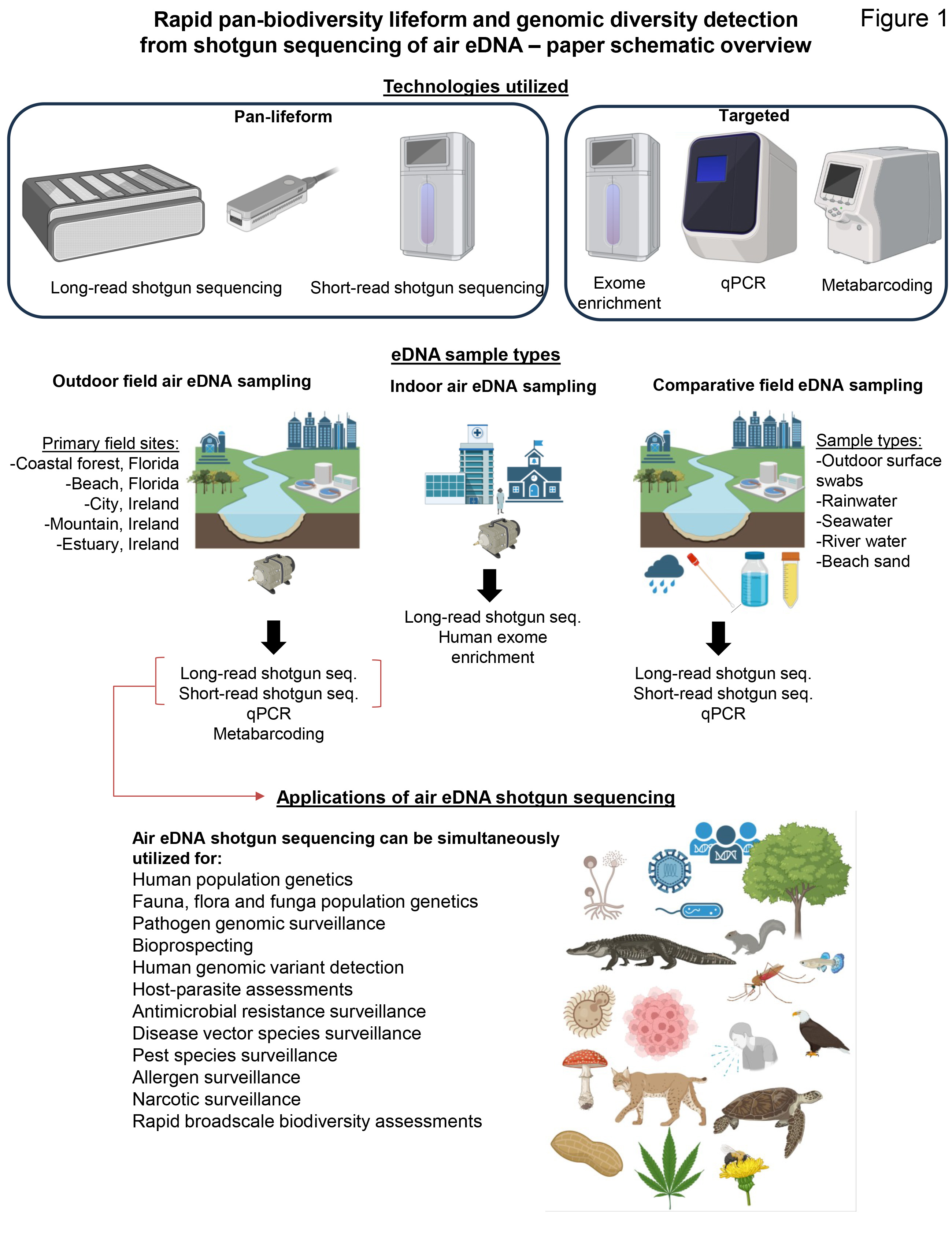
Published June 3 in Nature Ecology and Evolution, the study by Whitney Laboratory Professor of Wildlife Disease Genomics Dr. David Duffy and lab, Cat Eastman, MS, and colleagues reveals the power of environmental DNA, vacuumed up from the air, which can track everything from elusive bobcats to illicit drugs.
During a single week in April 2023, the area around Florida’s Washington Oaks Gardens State Park was abuzz. A bobcat passed by, perhaps stalking the eastern gray squirrels. An eastern diamondback rattlesnake slithered through the undergrowth. The spaces among the grand oaks hummed with wildlife—a big brown bat, mosquitoes, and an osprey—and people with African, European, and Asian ancestors.
Scientists didn’t directly see any of these creatures. But they used cutting-edge DNA technology to find evidence of them in tiny specks of organic material floating in the air. A similar analysis of air from the streets of Dublin revealed a far different, but equally rich, tableau of life. Together the work shows the potential of airborne DNA-detection tools to surveil biodiversity, disease-causing microbes, and invasive species. But because the method also captures genetic material originating from people, it raises ethical questions around how the tool will be used.
Read the full article in Science: DNA captured from the air could track wildlife, invasive species—and humans

UF News: Environmental DNA floating in the air tracks wildlife, viruses — even drugs
Nature Ecology and Evolution: Shotgun sequencing of airborne eDNA achieves rapid assessment of whole biomes, population genetics and genomic variation
Image: Biologist David Duffy, seen here taking an air sample on the Matanzas River in northeastern Florida, inventories species using DNA shed by organisms into the environment. Credit: John Jernigan